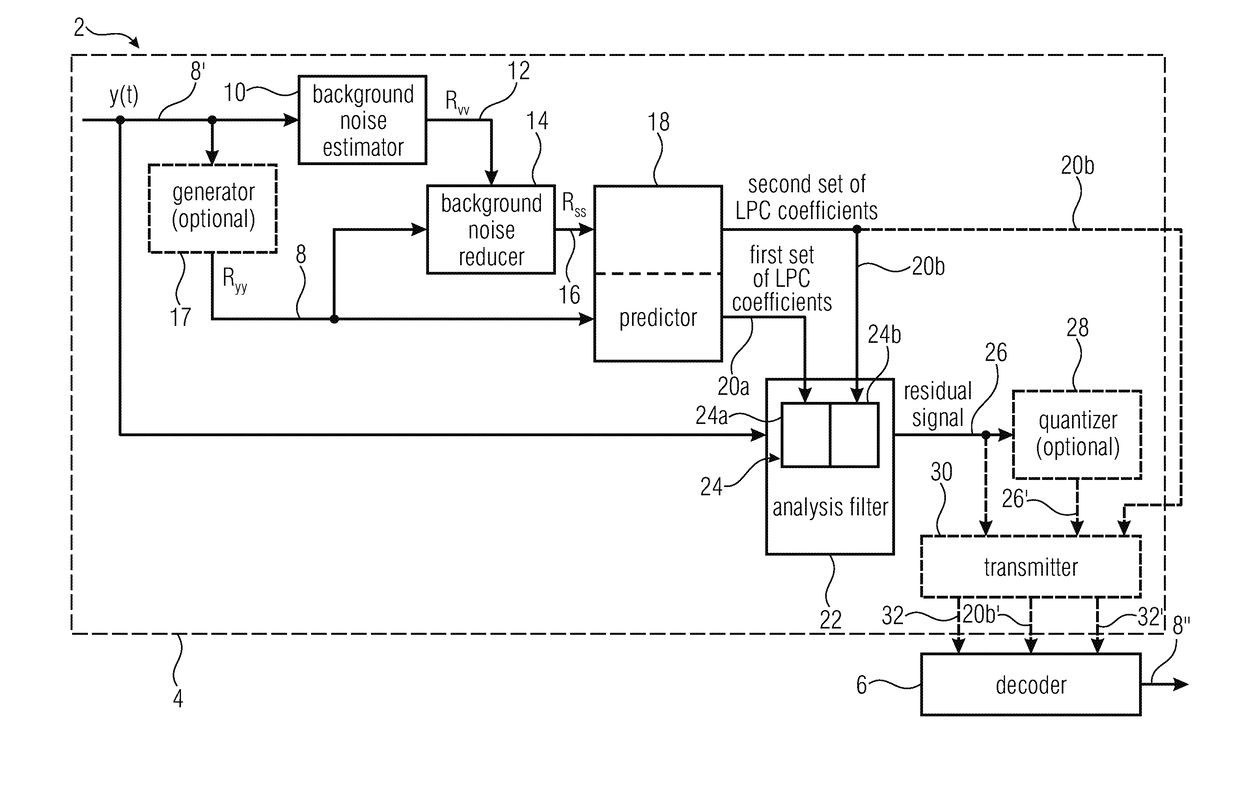Encoder and method for encoding an audio signal with reduced background noise using linear predictive coding
a technology of background noise and encoder, applied in the field of encoder and method for encoding an audio signal with reduced background noise using linear predictive coding, can solve the problems of speech signal easily becoming distorted, the minimization of quantization noise and interference at least being difficult, and the cascaded processing not allowing joint perceptual optimization/minimization of quality, etc., to achieve the effect of improving the processing speed or processing time of the input audio signal, reducing background noise, and increasing the signal processing
- Summary
- Abstract
- Description
- Claims
- Application Information
AI Technical Summary
Benefits of technology
Problems solved by technology
Method used
Image
Examples
Embodiment Construction
[0031]In the following, embodiments of the invention will be described in further detail. Elements shown in the respective figures having the same or a similar functionality with have associated therewith the same reference signs.
[0032]Following will describe a method for joint enhancement and coding, based on Wiener filtering [12] and CELP coding. The advantages of this fusion are that 1) inclusion of Wiener filtering in the processing chain does not increase the low algorithmic delay of the CELP codec, and that 2) the joint optimization simultaneously minimizes distortion due to quantization and background noise. Moreover, the computational complexity of the joint scheme is lower than the one of the cascaded approach. The implementation relies on recent work on residual-windowing in CELP-style codecs [13, 14, 15], which allows to incorporate the Wiener filtering into the filters of the CELP codec in a new way. With this approach it can demonstrated that both the objective and subj...
PUM
 Login to View More
Login to View More Abstract
Description
Claims
Application Information
 Login to View More
Login to View More - R&D
- Intellectual Property
- Life Sciences
- Materials
- Tech Scout
- Unparalleled Data Quality
- Higher Quality Content
- 60% Fewer Hallucinations
Browse by: Latest US Patents, China's latest patents, Technical Efficacy Thesaurus, Application Domain, Technology Topic, Popular Technical Reports.
© 2025 PatSnap. All rights reserved.Legal|Privacy policy|Modern Slavery Act Transparency Statement|Sitemap|About US| Contact US: help@patsnap.com



